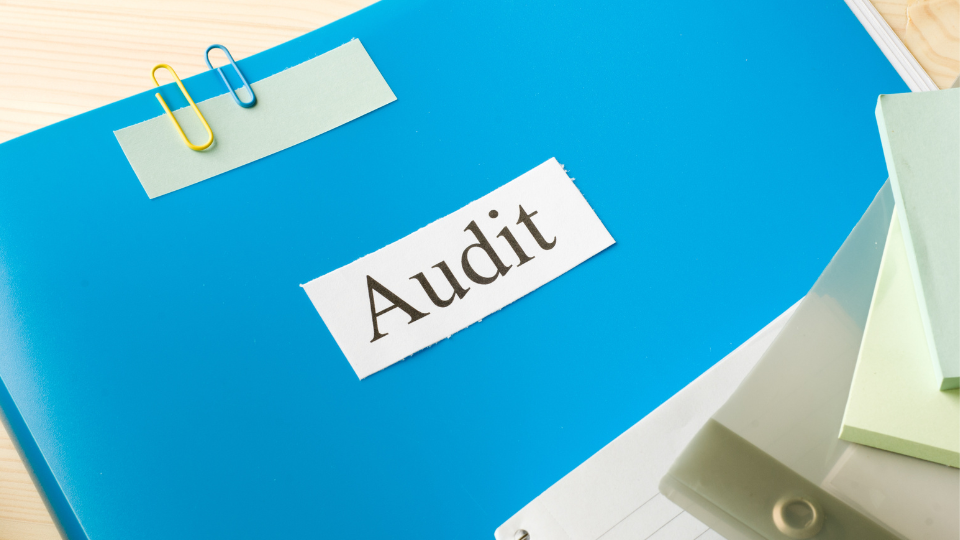Mortgage buybacks can be a substantial challenge for mortgage lenders because they can cut into their profits. When a seemingly secure loan sold into the secondary market fails to meet the investor’s or agency’s guidelines, the lender that originated the loan may have to repurchase it. This often results in financial losses and operational strain.
In this article, we will explore the causes of mortgage buybacks, the typical repurchase process, and strategies lenders can implement to reduce their buyback risk. We will also highlight how IncomeXpert, a tool designed to ensure accurate income calculations, can help mortgage lenders mitigate this risk.
Main takeaways from this article:
- Mortgage buybacks occur when sold loans fail investor/agency rules, forcing lenders to repurchase them at a potential loss.
- Income miscalculations, missing documents, appraisal issues, and failure to meet investor overlays are common causes of mortgage buybacks.
- The buyback process involves defect discovery, a repurchase request, lender review, payment, and remediation.
- Buybacks lead to direct financial losses, damage the lender’s reputation and investor confidence, and increase internal operational costs.
- Lenders can reduce buyback risk by strengthening quality control, training underwriters, and using standardized income analysis tools like IncomeXpert.
What is a mortgage buyback?

A mortgage buyback, also referred to as a putback, loan buyback, or loan repurchase, occurs when a mortgage loan sold into the secondary market is required to be repurchased by the mortgage originator.
This happens for several reasons, but mainly when the loan is found to have defects or not comply with the guidelines set by the investor or agency that purchased it (e.g., Fannie Mae, Freddie Mac, or private investors). The request for a buyback is typically issued by the investor or agency that holds the loan.
Common causes of loan buybacks

Repurchase demands can be triggered by a number of issues that may arise at different stages of the loan origination process, from underwriting to closing. These issues can include:
- Income miscalculations or guideline violations: This is one of the most common triggers of repurchase demands from Fannie Mae and Freddie Mac. Errors from the selling lender in calculating a borrower’s income or failing to adhere to specific income-related guidelines set by investors or agencies can lead to buyback requests.
- Missing or inconsistent documentation: Incomplete, inaccurate, or conflicting documentation can raise red flags. This includes missing pages, illegible documents, or inconsistencies between different documents.
- Appraisal issues or collateral misrepresentation: Problems with the property appraisal, such as inflated values or failure to accurately represent the property’s condition, can result in buybacks.
- Fraud or misrepresentation: Borrower fraud or misrepresentation of information on the loan application, which may include falsified income, assets, or employment information, is a serious trigger for buybacks.
- Failure to meet investor or agency overlays: Investors or agencies may have specific requirements (overlays) that go beyond basic guidelines. Failure to meet these overlays, even if the loan meets general guidelines, can lead to a buyback.
The mortgage buyback process
Generally, the following are the steps involved in the mortgage buyback process:
1. A defect is discovered
The investor or agency identifies a potential defect in the loan. This discovery can occur through routine audits and quality control reviews.
A routine audit is where investors or agencies review a sample of their loan portfolio for compliance with guidelines and quality standards. Such audits may reveal documentation discrepancies or underwriting deviations. Quality control reviews, conducted shortly after the loan’s sale, serve as a post-funding check to ensure the accuracy and completeness of the loan file and adherence to relevant guidelines.
2. A loan repurchase request is issued
Once a defect is identified as a violation of guidelines or warranties, a formal repurchase request is issued. This request is a communication from the investor or agency demanding that the originating lender buy back the loan, accompanied by documentation detailing the identified defects.
The request includes essential loan information, such as the loan number, borrower name, and sale date, and specifies the guideline or representation that has been violated.
3. The lender reviews the request and responds
Upon receiving a repurchase request, the originating lender undertakes a thorough internal review of the loan file and the documentation provided by the investor or agency. They may either agree with the request and proceed with the buyback or dispute the request if they believe the loan is compliant.
4. They repurchase or make the whole payment
Should the originating lender agree with the repurchase request, they will buy back the loan from the investor or agency. This often involves paying the outstanding principal balance, accrued interest, and any associated costs. In some cases, a “make-whole” payment may be negotiated instead of a full repurchase.
5. Post-buyback remediation
Following the completion of a buyback, the originating lender must take corrective action to address the underlying issue of the identified defect. This may involve reprocessing the loan, correcting documentation errors, or taking disciplinary action against employees involved in the error.
The financial and operational impact of buybacks

Mortgage buybacks can have a significant negative impact on lenders:
- Direct losses from buyback payment or market value reduction: The most immediate impact is the financial loss incurred when repurchasing a loan. The lender must pay the outstanding balance, which may be higher than the current market value of the loan.
- Loss of investor confidence or eligibility with agencies: Frequent buybacks can damage a lender’s reputation and make them less attractive to investors, or they can even suspend their ability to sell loans to certain agencies.
- Reputational damage among peers, regulators, and warehouse lenders: Buybacks can negatively affect a lender’s standing within the industry, potentially impacting relationships with warehouse lenders and increasing scrutiny from regulators.
- Increased internal costs: Handling buybacks, including internal audits, legal reviews, loan reprocessing, and employee retraining, adds to operational expenses.
How lenders can reduce mortgage buyback risk

Lenders can take some proactive steps to minimize their exposure to mortgage buybacks. They can:
Strengthen pre-close quality control
A robust pre-close quality control process acts as a critical line of defense against potential buybacks. This involves a thorough review of the loan file before it closes and is sold into the secondary market.
Implementing comprehensive checklists, employing experienced quality control personnel, and conducting targeted audits on high-risk loan characteristics can help identify and rectify errors or inconsistencies early in the process. Addressing issues at this stage is less costly and disruptive than dealing with a repurchase request down the line.
Train underwriters on changing guidelines
Investors and agencies are frequently updating their guidelines and requirements. Therefore, continuous and comprehensive training for underwriting staff is essential. This training should cover not only new guidelines but also provide refreshers on existing policies and highlight areas where errors commonly occur.
Equipping underwriters with up-to-date knowledge empowers them to make informed decisions, adhere to the latest standards, and ultimately originate higher-quality, compliant loans less susceptible to buyback requests.
Improve documentation workflows
Inefficient or error-prone documentation workflows are a major contributor to mortgage buybacks. Implementing clear and standardized procedures for collecting, organizing, and verifying loan documents is crucial.
Leveraging technology such as document management systems and e-signature platforms can enhance accuracy, reduce missing information, and create a more transparent and auditable trail. By streamlining the documentation process, lenders can minimize inconsistencies and ensure that loan files meet investor and agency requirements.
Use standardized income analysis tools
Income calculation and verification are often complex and subject to strict investor and agency guidelines. Employing standardized income analysis tools can dramatically reduce the risk of errors in this critical area.
These tools automate calculations based on various income sources and help ensure compliance with applicable rules. By providing a consistent and auditable approach to income analysis, lenders can minimize underwriting mistakes that frequently lead to buyback demands.
How IncomeXpert helps minimize buyback exposure
IncomeXpert is a solution designed to help lenders reduce their mortgage buyback risk by addressing a key area of concern: income calculation and verification. Here’s how the tool simplifies the loan process:
- Automates agency-compliant income calculations: IncomeXpert automates the often complex process of calculating income according to specific agency guidelines, reducing the risk of manual errors and ensuring compliance.
- Verifies income documentation completeness: The tool helps ensure that all necessary income documentation is present and complete, minimizing the risk of buybacks due to missing or inadequate documentation.
- Supports defensible audit trails: IncomeXpert provides a clear and transparent audit trail of all income calculations and documentation, making it easier to respond to repurchase requests and demonstrate compliance.
- Reduces underwriting errors: By automating and standardizing income analysis, IncomeXpert helps underwriters make more informed and accurate decisions, reducing the likelihood of errors that could lead to buybacks.
- Backed by reps and warranties: Blueprint stands behind its income calculations with reps and warranties, which cover both the math and the application of agency guidelines. This additional protection gives lenders greater confidence when defending loan quality in the face of potential repurchase demands.
Protect yourself from mortgage buybacks with IncomeXpert
Mortgage buybacks represent a significant risk to lenders. By understanding the causes of buybacks and implementing strategies to mitigate this risk, lenders can protect their bottom line and maintain their reputation. Tools like IncomeXpert play a vital role in this effort, providing the technology and support needed to ensure loan quality and compliance.
IncomeXpert gives lenders the technological support they need to improve the quality of their loans and comply with agency and investor guidelines. It accomplishes this by addressing a primary driver of buyback risk: income calculation and documentation verification. As a result, lenders are better equipped to deal with the challenges of the mortgage market with greater security and confidence.
So, are you ready to fortify your lending operations against the risks of mortgage buybacks with IncomeXpert? Request a demo today!

